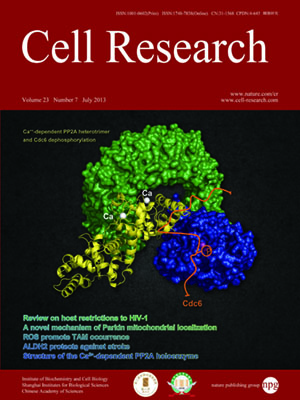
Volume 23, No 7, Jul 2013
ISSN: 1001-0602
EISSN: 1748-7838 2018
impact factor 17.848*
(Clarivate Analytics, 2019)
Volume 23 Issue 7, July 2013: 886-897
ORIGINAL ARTICLES
Parkin mitochondrial translocation is achieved through a novel catalytic activity coupled mechanism
Xinde Zheng1 and Tony Hunter1
1Molecular and Cell Biology Laboratory, Salk Institute for Biological Studies, 10010 North Torrey Pines Road, La Jolla, CA 92037, USA
Correspondence: Xinde Zheng, Tel: 1+858-453-4100×1470 Email:xzheng@salk.edu;Tony Hunter, Tel: 1+858-453-4100×1385(hunter@salk.edu)
Pink1, a mitochondrial kinase, and Parkin, an E3 ubiquitin ligase, function in mitochondrial maintenance. Pink1 accumulates on depolarized mitochondria, where it recruits Parkin to mainly induce K63-linked chain ubiquitination of outer membrane proteins and eventually mitophagy. Parkin belongs to the RBR E3 ligase family. Recently, it has been proposed that the RBR domain transfers ubiquitin to targets via a cysteine~ubiquitin enzyme intermediate, in a manner similar to HECT domain E3 ligases. However, direct evidence for a ubiquitin transfer mechanism and its importance for Parkin's in vivo function is still missing. Here, we report that Parkin E3 activity relies on cysteine-mediated ubiquitin transfer during mitophagy. Mutating the putative catalytic cysteine to serine (Parkin C431S) traps ubiquitin, and surprisingly, also abrogates Parkin mitochondrial translocation, indicating that E3 activity is essential for Parkin translocation. We found that Parkin can bind to K63-linked ubiquitin chains, and that targeting K63-mimicking ubiquitin chains to mitochondria restores Parkin C431S localization. We propose that Parkin translocation is achieved through a novel catalytic activity coupled mechanism.
10.1038/cr.2013.66
FULL TEXT | PDF
Browse 11368


